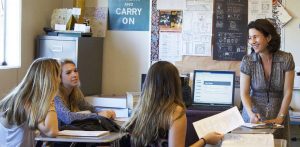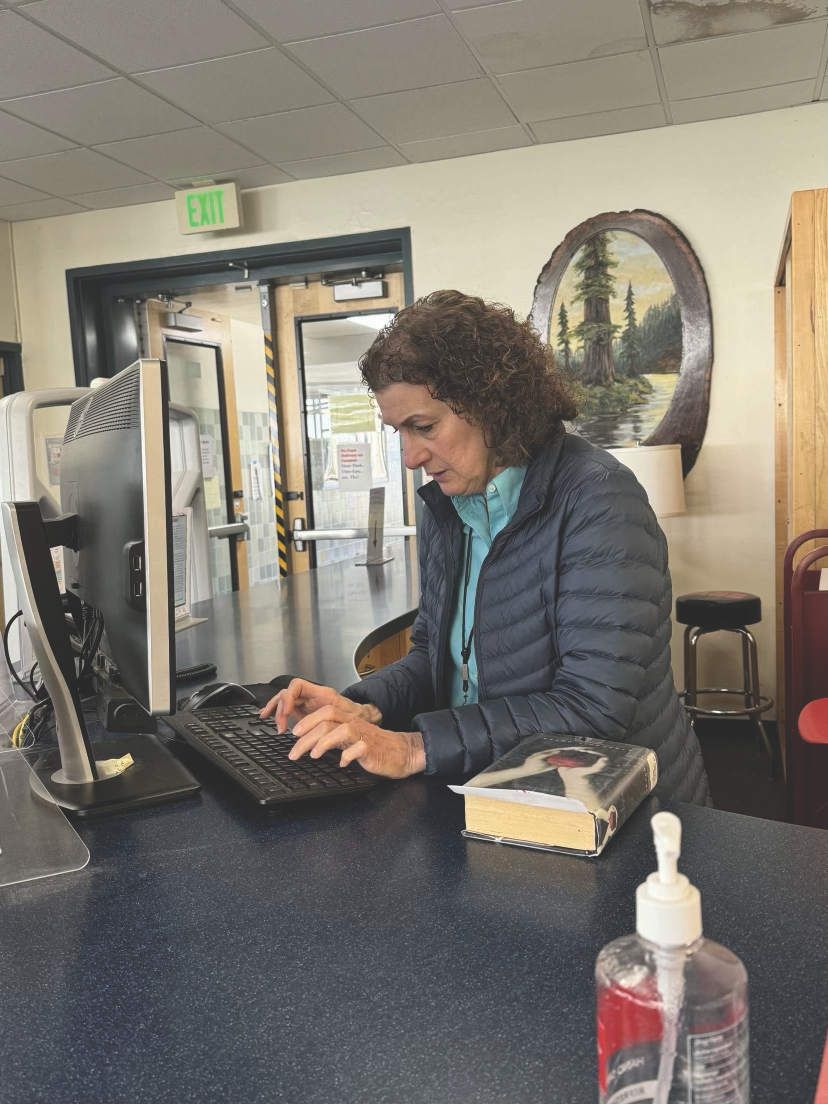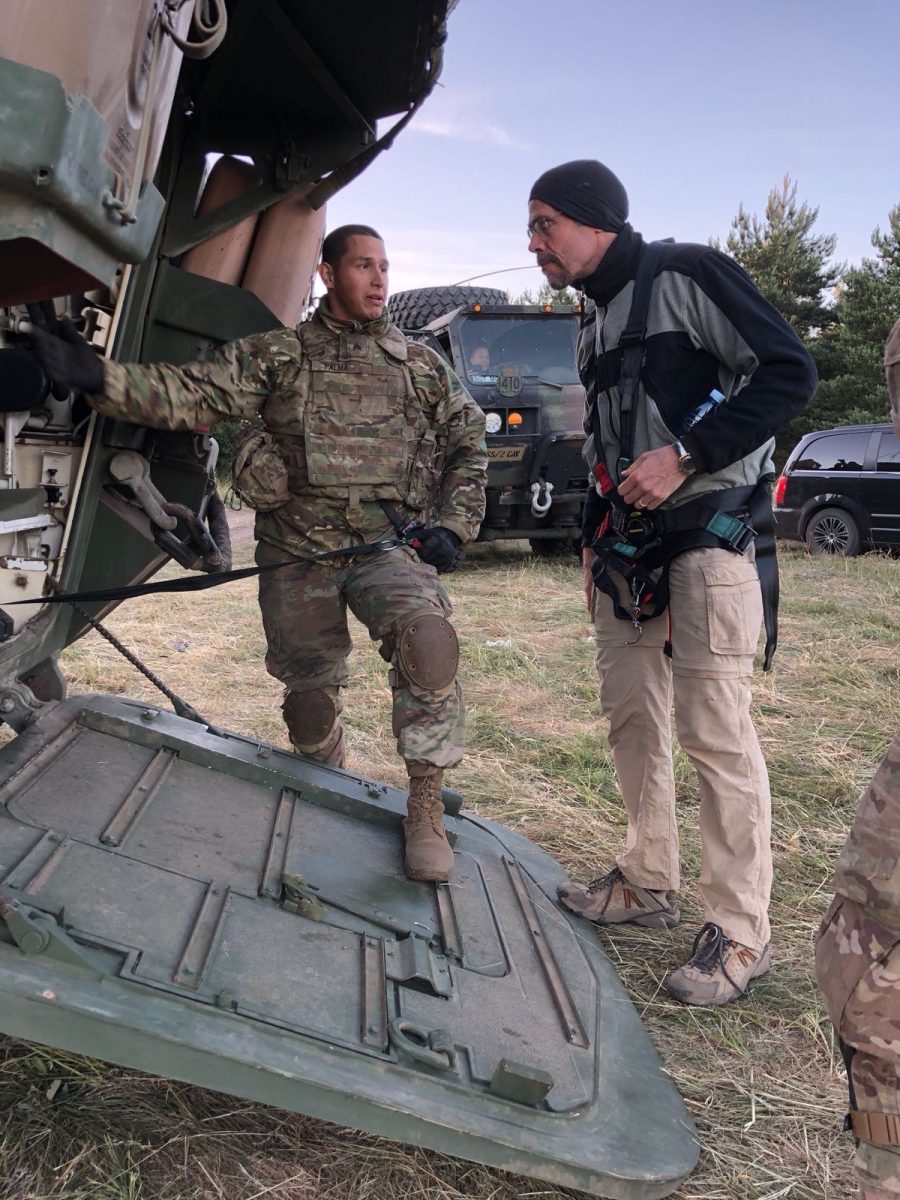Redwood’s English department is extensive, offering many specialized upper-division electives to students. Although many students may know bigger electives such as AP Language and Composition and Essay Exposition, some of the smaller divisions are less known.

Literary Walkabouts
Focused on non-fiction pieces about travel and exploration, Literary Walkabouts is a course that allows students to understand different cultures and issues around the world. Fiona Allan teaches a section of the course, and although she didn’t create the class, she has a personal connection to the subject.
“I am a travel writer, and I’ve lived all over the world, so [Literary Walkabouts] was a natural fit for me in many ways,” Allan said.
Allan believes that her passion for the subject inspires students to engage deeply in the course. Once they understand the basic background knowledge, the students become very passionate, according to Allan.
“It really fosters a love of travel and writing about travel, and recreating experiences they had while traveling several years ago in stories,” said Allan. “In college essays, students are using past experiences they had in the essays, so we’re finding and rediscovering parts about themselves that maybe they’d forgotten, which is great.”
Over the years, guest speakers have come in to share their experiences traveling the world.
“Last year a parent came in who had climbed Mount Everest. He had ropes, and crampons, and suits, and they had the students get involved,” Allan said. “They were blowing in straws, because it’s really hard to breathe up there so it was supposed to recreate that sensation. They also brought Buddhist prayer flags from the top of Everest for the classroom.”
Another year, while reading “Running the Amazon” by Joe Kane, Allan found a friend of the author.
“I called the Sea Trek place down in Sausalito to see if anyone would like to speak. The owner came in and brought a kayak. Every year he takes Joe Kane and somebody else to the Gulf of Mexico to have a big kayaking trip. So he ended up getting my class in touch with the author,” Allan said.
Science Fiction
Allan also teaches a section Science Fiction during the spring. Although she now has a deep understanding of the genre, that was not the case when she was originally assigned to teach the course a couple years ago.
“I didn’t know much about the subject,” Allan said. “I was learning with all of my students. I was pleasantly surprised because I didn’t think it was going to be so much fun and so interesting as well.”
As she discovered what science fiction was, Allan realized that it related to everyone in one way or another.
“H.G. Wells saw the future of the world, the different technology, how we would be living in the future, and things that could destroy us,” said Allan. “That really hasn’t changed. We still have these fears that what we create might destroy us, while helping us.”
Aside from reading novels and analyzing how past predictions came true, Science Fiction also makes movies. Allan has a friend in the film industry come talk to the class before they begin their projects.
“I have a friend who used to work for Industrial Light Magic, which is now Disney. He’s worked on Harry Potter and Star Trek,” said Allan. “I get him to come in every year and talk to the students about filmmaking and different aspects of filming so that when they go to make their own film, they have this knowledge.”
According to Allan, the course’s relevance to the world and its ability to help students understand technology is what keeps the students engaged in the class.
Short Stories
Carolyn Dahlman is teaching a section of Short Stories this semester. The course focuses on the six elements of narrative: plot, setting, characterization, atmosphere, point of view, and conflict. Using short stories, Dahlman focuses on one element at a time. She finds that studying these elements through short stories is more effective for some students.
“Short stories is good for someone who struggles with reading a novel and getting through it,” Dahlman said. “Hopefully they’ll find an area of success, realizing that they can understand bigger, key concepts; they just needed it in smaller chunks.”
Students also get the opportunity to practice these elements through creative writings and artistic projects.
“I noticed that a lot of my students are very artistically inclined,” Dahlman said, adding that “the majority of students who choose to take Short Stories are looking to improve their creative writing skills. They want to write original stories, and that’s their primary interest.”
Dahlman added that having such a diverse choice of upper division English electives doesn’t just benefit the students.
“I think that it’s positive for the teachers in general to be able to specialize in a subject,” she said. “One of the reasons why the teachers are so invested is because they get to choose and specialize.”
San Francisco Stories
A native Texan who came to Redwood last year, Joe Gonzalez knew very little about San Francisco and its history when he was assigned to teach San Francisco Stories. However, he became intimately familiar with the city and its background as he taught the course and did his own independent research.
“Last year the course was focused around several fiction books that were set in the San Francisco area,” Gonzalez said, adding that the main focus was the character that the city played in those novels.
According to Gonzalez, the character of the city originates in its unique history.
“San Francisco was founded by prospectors and, to some extent, crooks and outsiders, and I think that this adds to [the city’s] legacy today as a place [for people] to escape and reinvent themselves,” Gonzalez said.
Although the course focuses on texts centered in the city, Gonzalez believes that many students take San Francisco Stories in order to learn the history of the city itself.
“Students want to have a better working knowledge of the city itself so that they can navigate it, understand it, know what to do in it,” Gonzalez said. “To be so close and not know much about it is why students come in – it’s for the knowledge.”
Gonzalez has incorporated these desires into the course with a student project. Last year, he had students go to the city to research a monument, place, or person, and report back their findings to the class.
“The best way to get students engaged in the learning of the course is to have a balance of personal reflections and interactions with the city,” Gonzalez said. “I feel like there’s nothing I could teach in the class that would be equivalent to experiencing the city, spending time there, and exploring it themselves.”
By the end of the semester, Gonzalez’s goal is that the students have a deeper understanding of the city and feel comfortable in it.
“My goal is that they be able to understand the architects of the city historically, socially, and physically, and where they fit in that story,” he said.

















